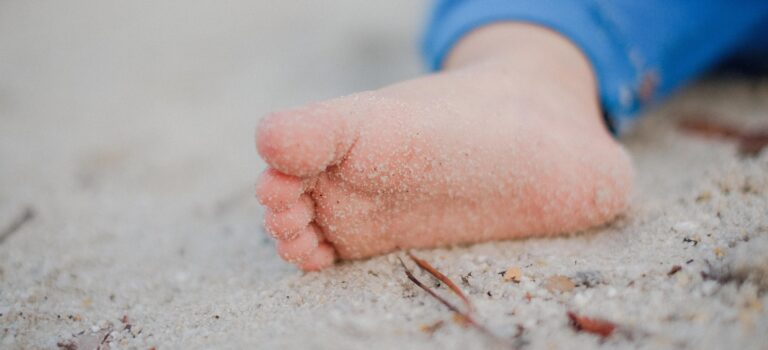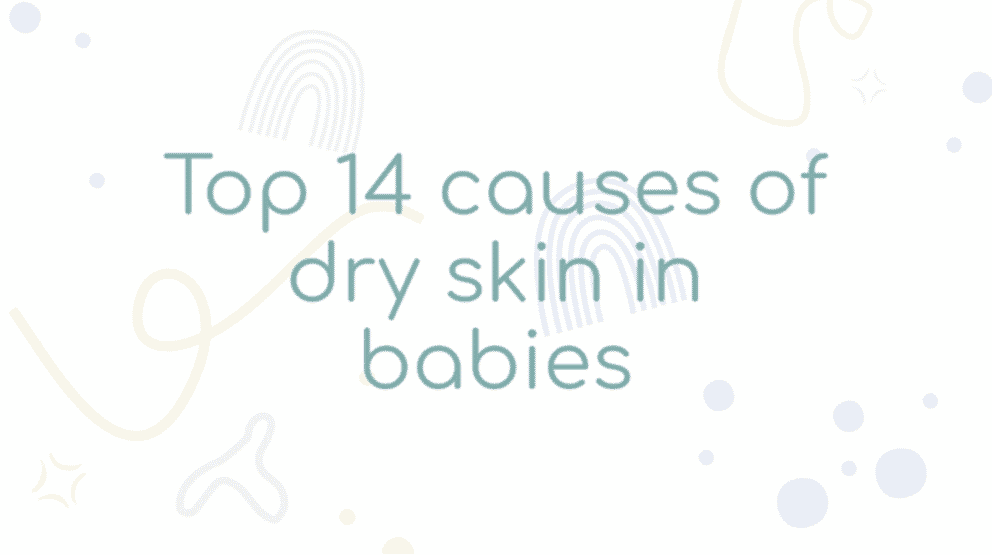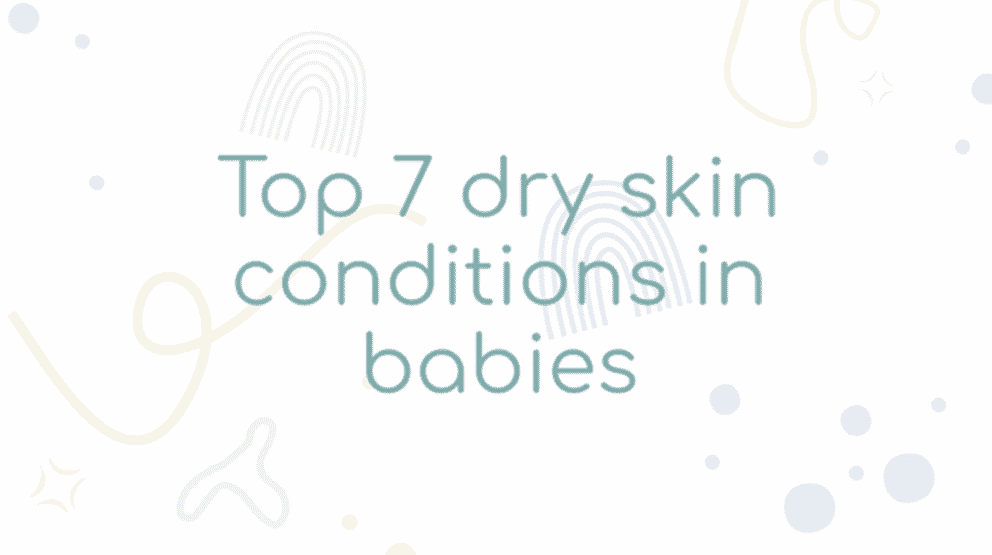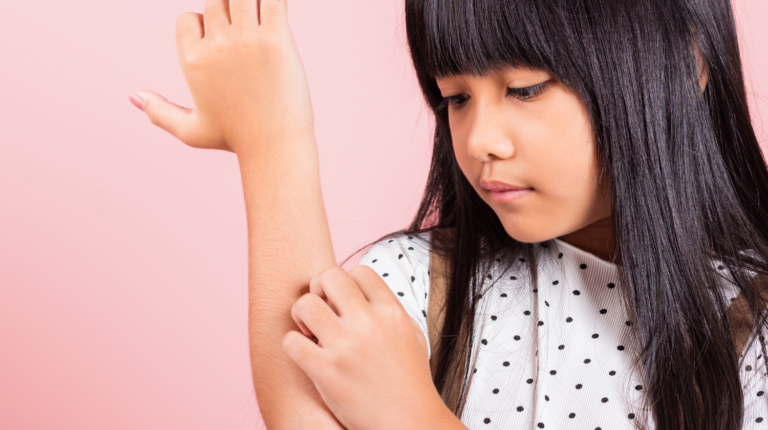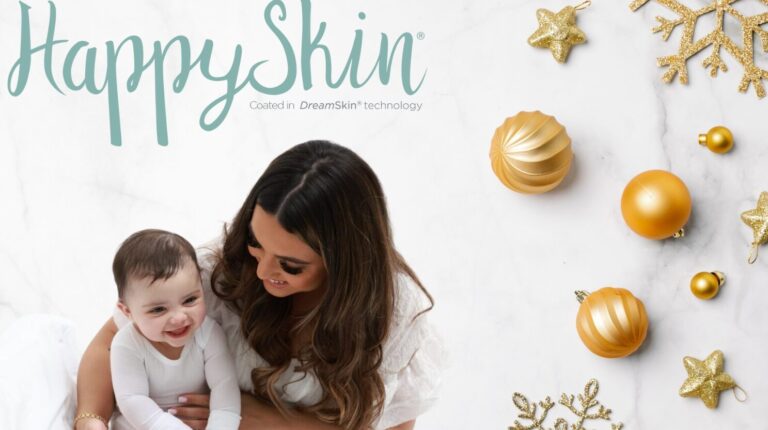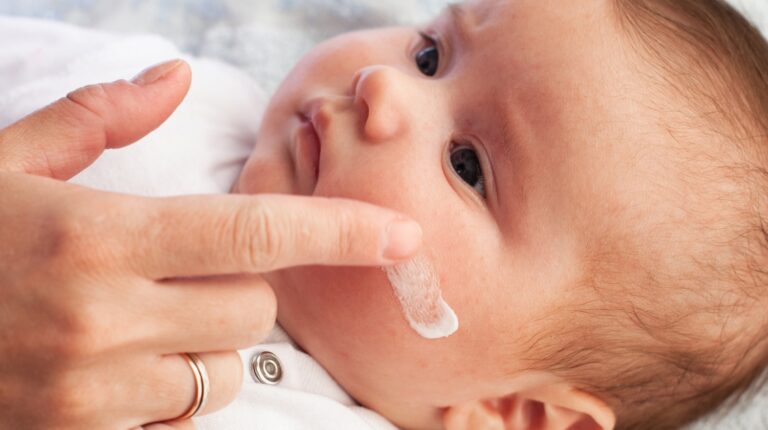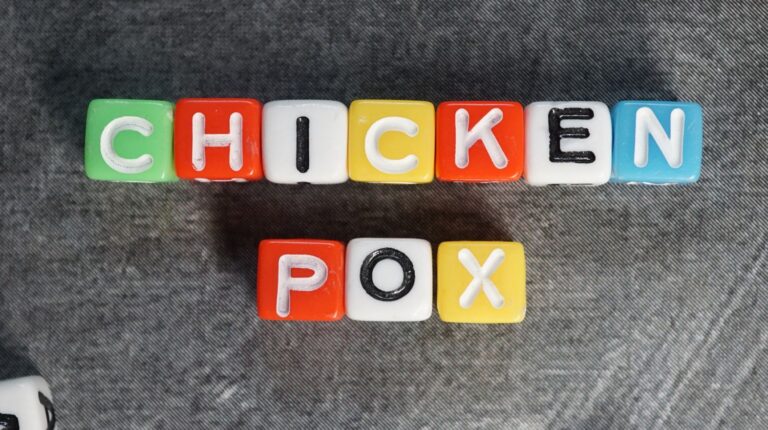
Dry skin in babies is more common than you might think.
But how can you tell what’s causing your baby’s dry skin, and when it should be a cause for concern?
We’ll take you through a list of the top 14 reasons for babies having dry skin to help you understand what might be going on with your baby.
Here are the most common causes of dry skin in babies, from environmental triggers to chronic skin conditions.
Top 7 environmental causes of dry skin in babies
Here are seven of the most common things that cause dry skin in babies in day-to-day life.
Newborn skin peeling
Once you’ve taken your newborn baby home, it can be alarming to notice that their skin has started peeling.
It’s actually normal for newborns to have dry and peeling skin in the first few weeks after they’re born.
In the womb, babies are coated in a waxy substance called vernix that protects their skin from amniotic fluid.
Outside of the womb after they’re born, babies’ skin has to adjust to its environment without that coating, and starts to peel as a kind of natural exfoliation.
This peeling should stop after 2-3 weeks from birth.
Dehydration
As an adult, you’re probably aware of the importance of drinking water to hydrate your skin.
It’s just as important for babies to stay hydrated, which means making sure they’re drinking enough breast milk if they’re younger or eating and drinking enough if they’re older.
Cool dry air both indoors and outside can also dehydrate your baby’s skin.
You might want to use a humidifier to regulate the moisture in the air and keep your baby’s skin happy.
Overexposure to water
Just as not enough water can make your baby’s skin dry, too much water can also have a negative effect.
Yes, it’s important to keep your baby’s skin clean, but long baths or bathing every day isn’t necessary.
Spending too much time in the water can actually dry out your baby’s skin because it washes away the natural protective oils.
Another way that water can cause dry skin is if your baby drools a lot and it’s left to irritate the skin.
You should always gently clean your baby’s face and body of any drool, and change their clothes if they get soaked through.
Soaps and lotions
Babies naturally have more sensitive skin because it’s thinner and hasn’t built up the same protective barrier as an older child or adult.
This means washing your baby with standard soaps and shampoos could result in harsh chemicals irritating your baby’s skin.
Alcohol-based products in particular actually strip moisture from the skin by removing natural oils.
Always read the label when you buy bath soaps, moisturising lotions, or laundry detergents.
Stick to buying products that are formulated specifically with baby sensitive skin in mind.
Temperature
Just as cold air can dehydrate skin, so can hot air or hot water.
Avoid hot baths or excessive use of central heating to maintain a comfortable temperature for your baby.
Heat can remove any humidity in the air, drying out exposed skin.
It can also make your baby sweat, irritating the skin in areas where sweat can pool and get trapped, like joint creases and underneath clothes.
Blocked sweat glands can result in an itchy red heat rash.
Don’t swaddle your baby too tightly or dress them in tight itchy clothes – use light fabrics that let your baby’s skin breathe.
Weather
Dry skin in babies can sometimes be seasonal.
As we’ve discussed, extreme heat or cold can cause dry skin, so this condition can get worse in summer and winter.
Chapped skin from exposure to cold air and wind is especially common in the winter months.
Make sure your baby wears appropriate clothing for the season, and use a shade or cover on your baby’s pram to protect them against sun, wind, and rain.
Remember to keep your baby out of direct sunlight and apply sun cream in summer, and use fragrance-free moisturisers and lip balms in winter.
Nappy rash
Friction from nappies that are secured too tightly or exposure to ammonia from sitting in a soiled nappy for too long can result in a scaly rash where the skin is red and hot to the touch.
It’s important to change your baby’s nappy as soon as possible after they soil it, and clean your baby’s bottom thoroughly before putting a new nappy on.
Make sure the nappy isn’t too tight and adhesive tape isn’t sticking directly to the skin.
If this rash appears, apply a nappy rash cream after cleaning and before putting another nappy on every time.
Take your baby to the doctor if the skin is broken and/or there are raised blisters, as this can be a sign of a more serious infection.
Top 7 dry skin conditions in babies
Here are seven of the most common chronic skin conditions that appear in babies with dry skin as a symptom.
Cradle cap
Seborrhoeic dermatitis, commonly known as cradle cap, is a common condition among babies from a few weeks old up to 12 months.
Either an overproduction of oil or a bacterial infection of the hair follicles results in a build-up of dead skin, causing scaly layers that flake off and can become crusty.
It can be either dry or greasy, and can affect the brow, eyelids, and behind the ears as well as the scalp.
It’s known as cradle cap because it affects the baby’s scalp and upper face, and the build-up of skin usually occurs due to lack of movement while the baby’s in the cradle or cot.
You can buy special shampoos to treat cradle cap and massage baby oils into the scalp to help prevent build-up.
Never pick at the scales or flakes, as this will only make it worse and increase the risk of infection.
Cradle cap can clear up and reoccur for several months, but it generally goes away for good by the time the baby is around 8 months old.
Eczema
According to the British Association of Dermatologists, eczema or atopic dermatitis is a genetic condition that tends to run in families and affects 1 in 5 children.
Eczema presents as red, dry, and flaky or scaly skin that can cause severe itchiness.
It usually ‘flares up’ due to the presence of a trigger in the immediate environment, such as scented soaps or scratchy fabric.
Atopic eczema is generally treated by avoiding known triggers and regularly applying emollients to maintain moisture levels.
Though it’s a chronic and sometimes lifelong condition, eczema can sometimes clear up in childhood.
If your baby has frequent flare ups and suffers from constantly dry and itchy skin, specially engineered baby clothes for treating eczema can help to soothe your baby’s skin and manage their condition.
Ichthyosis
Ichthyosis is a less common genetic condition causing severely dry skin, which is usually diagnosed by a doctor early on based on the family’s medical history.
This condition can start to appear from the age of 2 months and can affect most areas of the body.
There are several types of ichthyosis, but the common factor is the unusual inability to shed dead skin cells properly.
The dead skin builds up into thick dry scales which can split or peel.
Regular gentle exfoliation and moisturisation with topical creams are required to manage this lifelong condition.
Keratosis pilaris
Keratosis pilaris is a genetic condition where the skin produces an excessive amount of a protein called keratin.
This blocks glands in the skin, resulting in tiny raised bumps that make the skin feel dry and rough.
It’s sometimes referred to as ‘chicken skin’ because of its appearance.
Keratosis pilaris is usually harmless and painless, but it can cause itchiness and sometimes self-consciousness later in life.
Daily gentle exfoliation can reduce the bumps, and moisturising creams can soothe itchiness and reduce dryness and redness.
Avoid dressing your baby in tight clothes or wrapping them in tight blankets, as this can worsen the condition by blocking glands with sweat as well as dead skin.
Pityriasis alba
Pityriasis alba is a non-hereditary type of eczema where pale scaly patches appear on the skin of the face, neck, or torso.
They might start as itchy pink patches around 1-4cm in size that later become hypopigmented.
These paler patches are often more visible in summer, when the surrounding skin tans.
The patches can go away by themselves within a few months, but equally they could return or last for several years.
You can treat the dryness and itchiness caused by pityriasis alba using moisturising creams, and avoid aggravating the condition by not using regular soaps and shampoos.
Psoriasis
Psoriasis is an autoimmune disease causing an overgrowth and build up of skin cells.
This results in reddish-white scaly patches appearing on the skin, which sometimes look silver.
These lesions can occur on the scalp, face, neck, trunk, nappy area, and elbow or knee folds.
Though psoriasis is a common condition in children and young adults, it’s less common in babies, and can be harder to diagnose at this age due to its similarity with other dry skin conditions.
Like eczema, psoriasis can come and go over time and is triggered by environmental factors.
You can treat psoriasis similarly to eczema, by avoiding triggers and maintaining skin moisture.
Contact dermatitis
Contact dermatitis is also similar to eczema, where a red and itchy rash occurs after an irritant has touched your baby’s skin and triggered an allergic reaction.
Unlike eczema, the rash will be localised to the area where the skin came into contact with the allergen.
Examples of common allergens include synthetic fabrics, chemicals in soaps, metals, and foods.
In the case of contact dermatitis, dry red skin should clear up fairly quickly after the trigger is removed.
Moisturising creams can be used to soothe the itchiness while you wait for the rash to clear up.
Persistent contact dermatitis can make your baby miserable if the itchiness disrupts their sleep, so consider investing in a specially designed sleep suit to moisturise your baby’s skin and stop them from scratching during the night.
Does your baby have a dry skin condition?
If your baby suffers from dry and flaky skin, Happy Skin base clothing with built-in DreamSkin technology can help.
Check out our selection of baby clothing purposely designed to lock in moisture and soothe dry skin, preventing scratching and helping the skin to heal.
Babies and parents can rest easy and itch-free with HappySkin.
